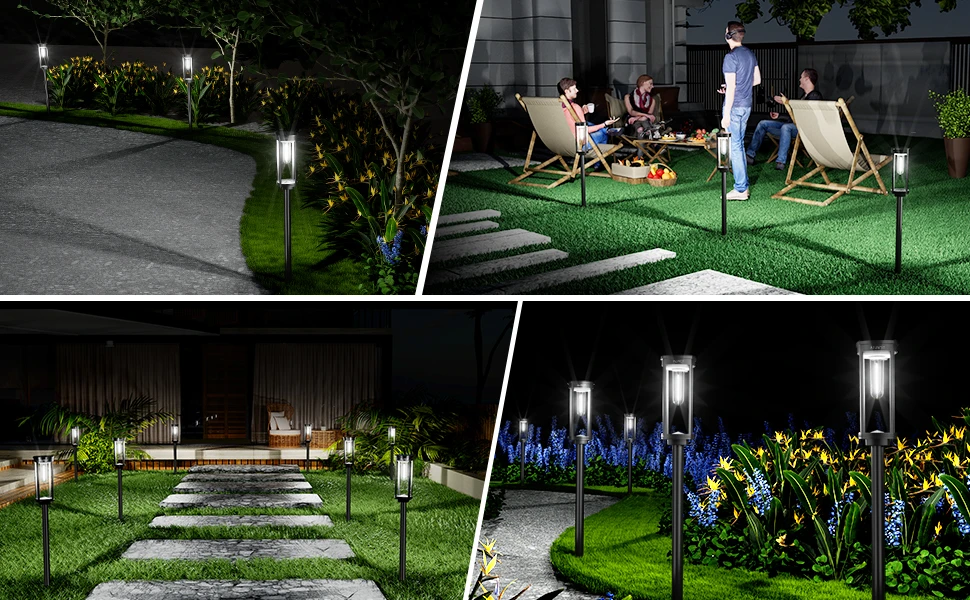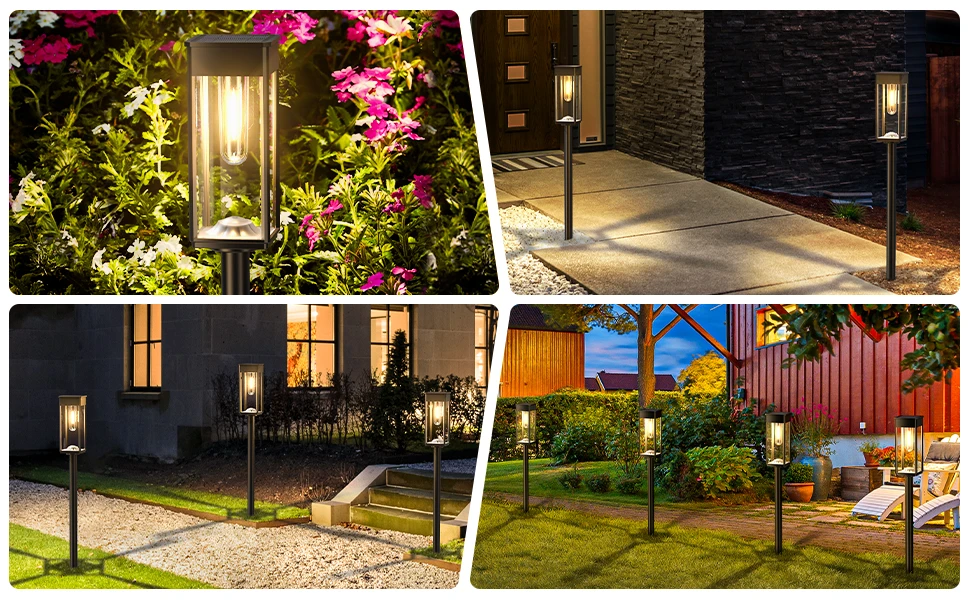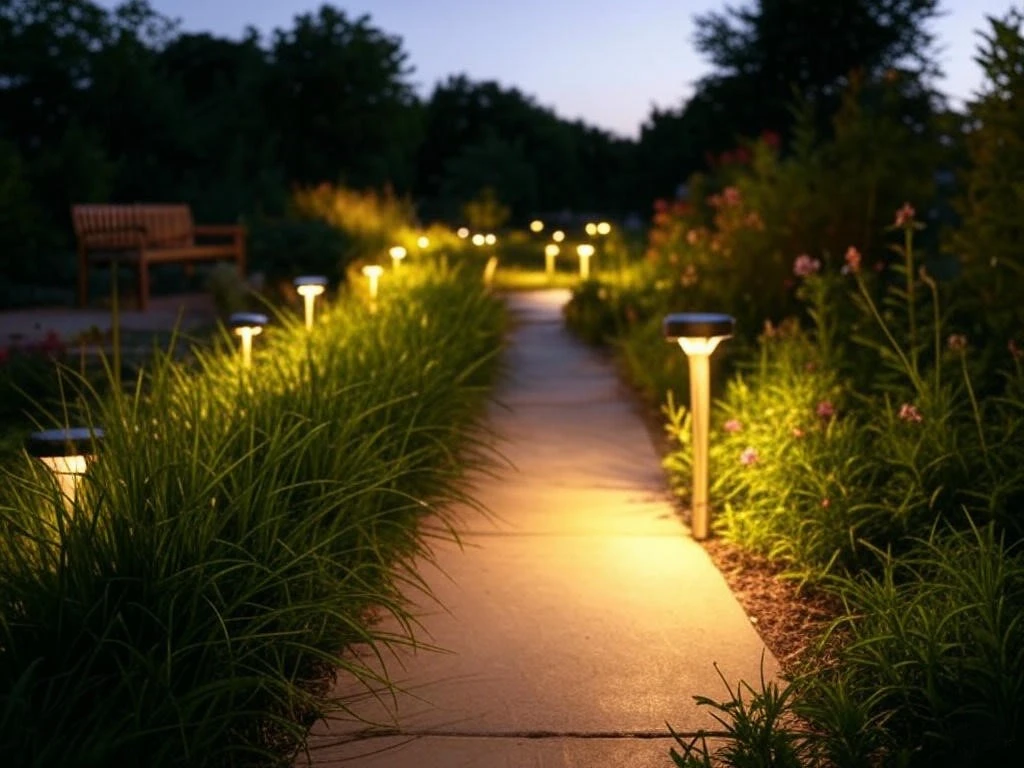Solar garden lights have become a staple for homeowners seeking eco-friendly lighting to illuminate pathways, patios, and gardens. These lights rely on solar panels to harness solar energy, powering LED lights through rechargeable batteries. Over time, however, the solar panel may become less efficient due to wear, damage, or environmental exposure, leading many to wonder: Can you buy replacement solar panels for garden lights? This article explores the availability of replacement solar panels, the factors affecting their performance, and practical steps to replace or upgrade them, ensuring your solar-powered lights remain bright and sustainable.

Understanding the Role of Solar Panels in Garden Lights
The solar panel is the core component of a solar garden light, converting sunlight into electricity to charge the rechargeable battery. Typically made of monocrystalline or polycrystalline silicon, these panels are designed to withstand outdoor conditions but can degrade over time. Factors like dirt accumulation, UV exposure, or physical damage can reduce their efficiency, dimming the LED light output. Replacing a faulty or worn-out solar panel can restore the performance of solar lights and extend their lifespan, making it a cost-effective alternative to purchasing new units.
Can You Buy Replacement Solar Panels?
Yes, replacement solar panels for solar garden lights are available, but their accessibility depends on several factors, including the brand, model, and design of the light. Here’s a breakdown of the options and considerations:
1. Manufacturer-Supplied Replacement Panels
Many reputable manufacturers of solar garden lights offer replacement solar panels for their specific models. Brands like Bitpott, Philips, and SolarGlow provide spare parts through their websites or authorized retailers. These panels are designed to match the original specifications, ensuring compatibility with the rechargeable battery and controller. To find the right replacement solar panel, check the product manual or the light’s model number, usually printed on the lamp housing or packaging.
2. Universal Solar Panels
For solar garden lights from lesser-known brands or discontinued models, universal replacement solar panels are an option. These panels, available from online retailers like Amazon, eBay, or specialty solar energy stores, come in standard sizes (e.g., 2V, 3V, or 4V) and are compatible with many solar-powered lights. However, you’ll need to verify the voltage, wattage, and connector type to ensure they match your light’s requirements. Universal panels are often cost-effective but may not fit perfectly without minor modifications.
3. DIY and Custom Solutions
For tech-savvy users, DIY solar panels can be sourced from electronics suppliers or salvaged from other solar garden lights. These require knowledge of soldering and electrical compatibility to integrate with the existing controller and battery. While DIY solutions offer flexibility, they carry risks of improper installation, which could reduce the durability of solar lights or void warranties.
4. Limitations and Challenges
Not all solar garden lights are designed for easy panel replacement. Some budget models have solar panels integrated into the lamp housing, making them difficult or impossible to replace without replacing the entire unit. Additionally, older or obscure brands may no longer offer spare parts, limiting options to universal or DIY solutions. Always check the light’s design before purchasing a replacement solar panel.
Where to Buy Replacement Solar Panels
Replacement solar panels can be found through various channels:
- Manufacturer Websites: Check the official website of the solar garden light brand for spare parts. Companies like Bitpott often list compatible solar panels for their models.
- Online Retailers: Platforms like Amazon, eBay, and Walmart offer a wide range of replacement solar panels, including universal options. Look for products with high ratings and detailed specifications.
- Specialty Solar Stores: Retailers specializing in solar energy products, such as SolarPanelStore or The Solar Centre, stock panels for garden lighting and other solar-powered devices.
- Local Hardware Stores: Chains like Home Depot or Lowe’s may carry universal solar panels or direct you to compatible options.
- Electronics Suppliers: For DIY projects, suppliers like DigiKey or Mouser provide photovoltaic cells that can be adapted for solar garden lights.
When purchasing, ensure the solar panel matches your light’s voltage (e.g., 1.2V for NiMH batteries, 3.7V for lithium-ion batteries) and physical dimensions. Reading customer reviews and checking return policies can help you avoid incompatible products.
Factors Affecting Solar Panel Performance
Before replacing a solar panel, it’s worth understanding why it may have failed or underperformed. Addressing these factors can prevent issues with the new panel and improve the lifespan of solar lights:
1. Dirt and Debris Accumulation
Dust, pollen, bird droppings, or leaves on the solar panel can block sunlight, reducing its efficiency. Regular cleaning with a soft cloth and mild dish soap can restore performance and may eliminate the need for a replacement solar panel.
2. Environmental Wear
Prolonged exposure to UV radiation, rain, or extreme temperatures can degrade the solar panel’s protective coating or photovoltaic cells. Panels with low weather resistance (e.g., IP44 or below) are particularly vulnerable. Choosing a replacement solar panel with an IP65 waterproof rating or higher ensures better durability.
3. Physical Damage
Cracks or scratches on the solar panel, often caused by impacts from falling branches or lawn equipment, can impair its ability to capture solar energy. Inspect the lamp housing for structural damage that may have contributed to the issue.
4. Battery or Controller Issues
Sometimes, dim or non-functional solar garden lights are caused by a faulty rechargeable battery or controller, not the solar panel. Test the battery’s voltage with a multimeter and inspect the controller for signs of corrosion or failure before investing in a replacement solar panel.

How to Replace a Solar Panel on Garden Lights
Replacing a solar panel requires careful preparation to ensure compatibility and safety. Follow these steps:
Step 1: Identify the Specifications
Check the voltage, wattage, and dimensions of the original solar panel, usually listed in the product manual or on the light itself. For example, a 2V 100mA panel is common for NiMH battery lights, while 3.7V 150mA panels suit lithium-ion models. Note the connector type (e.g., wire leads or plug) to ensure the replacement solar panel fits.
Step 2: Gather Tools
You’ll need a screwdriver (for opening the lamp housing), wire cutters/strippers (for DIY installations), and electrical tape or soldering equipment for secure connections. Wear gloves to protect your hands and avoid damaging the new panel.
Step 3: Remove the Old Panel
Turn off the solar garden light and open the lamp housing to access the solar panel. Disconnect the panel’s wires from the controller or battery compartment, noting their configuration for reconnection. Remove the old panel, which may be glued or screwed in place.
Step 4: Install the Replacement Panel
Attach the replacement solar panel to the lamp housing using adhesive, screws, or clips, depending on the design. Connect the panel’s wires to the controller or battery, ensuring proper polarity (positive to positive, negative to negative). For DIY panels, soldering may be required for a secure connection.
Step 5: Test the Light
Place the solar garden light in direct sunlight for 6-8 hours to charge the rechargeable battery. Test the LED light at night to confirm the new panel is functioning. If the light remains dim, check the battery or controller for issues.
Alternatives to Replacing Solar Panels
If replacement solar panels are unavailable or impractical, consider these alternatives:
- Clean the Existing Panel: A thorough cleaning with mild dish soap and a soft cloth may restore efficiency, especially if dirt is the issue.
- Upgrade the Entire Light: If the solar garden light is old or low-quality, replacing it with a modern unit featuring monocrystalline solar panels and IP65 waterproof ratings may be more cost-effective.
- Replace the Battery: A degraded rechargeable battery can mimic the symptoms of a faulty solar panel. Swap it with a compatible NiMH or lithium-ion battery to test performance.
- Professional Repair: Some solar energy specialists offer repair services for solar garden lights, including panel replacement or rewiring.
Benefits of Replacing Solar Panels
Replacing a solar panel rather than the entire solar garden light offers several advantages:
- Cost Savings: Replacement solar panels are often cheaper than new lights, especially for high-end models.
- Environmental Impact: Reusing existing components reduces waste, aligning with the eco-friendly lighting ethos of solar-powered lights.
- Extended Lifespan: A new solar panel can restore the performance of solar lights, delaying the need for a full replacement.
Advances in Solar Panel Technology
Recent innovations in solar technology are improving the durability of solar lights. Monocrystalline solar panels offer higher efficiency than polycrystalline alternatives, capturing more solar energy in less time. Some modern panels feature self-cleaning coatings that repel dirt, reducing maintenance needs. Additionally, smart controllers with IoT integration allow users to monitor solar panel performance, ensuring timely replacements or repairs.
Conclusion
Yes, you can buy replacement solar panels for solar garden lights, either from manufacturers, online retailers, or specialty solar energy stores. By understanding your light’s specifications, addressing performance issues, and choosing high-quality replacement solar panels, you can restore the performance of solar lights and extend their lifespan. Regular maintenance, such as cleaning and battery checks, further enhances durability, ensuring your solar garden lights continue to provide eco-friendly lighting for years. With the right approach, replacing a solar panel is a practical and sustainable way to keep your garden glowing brightly.


Leave a Reply